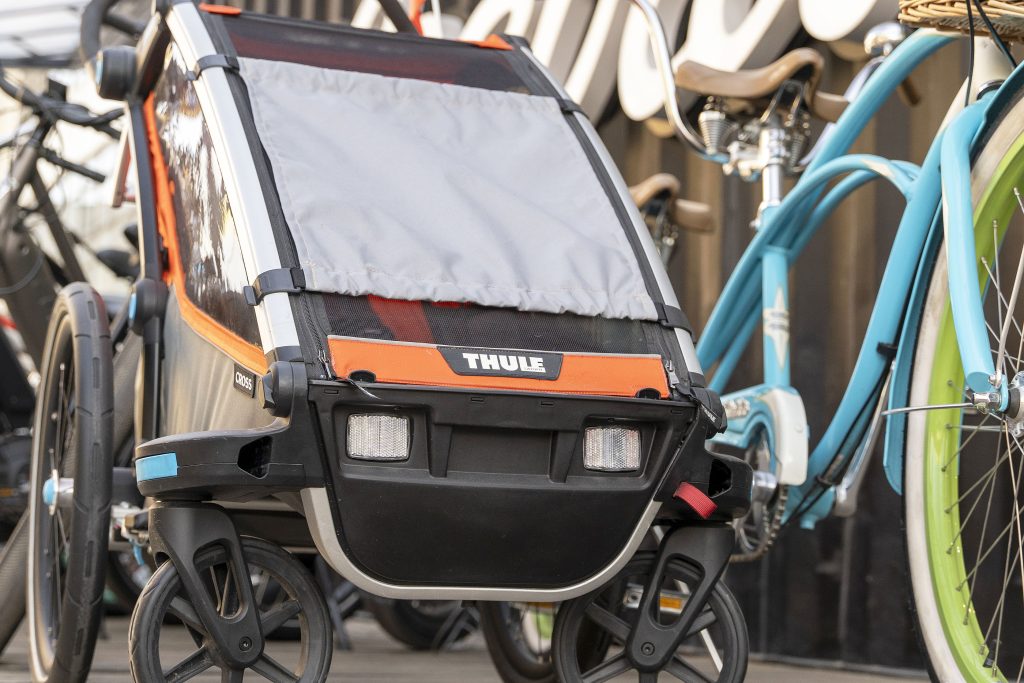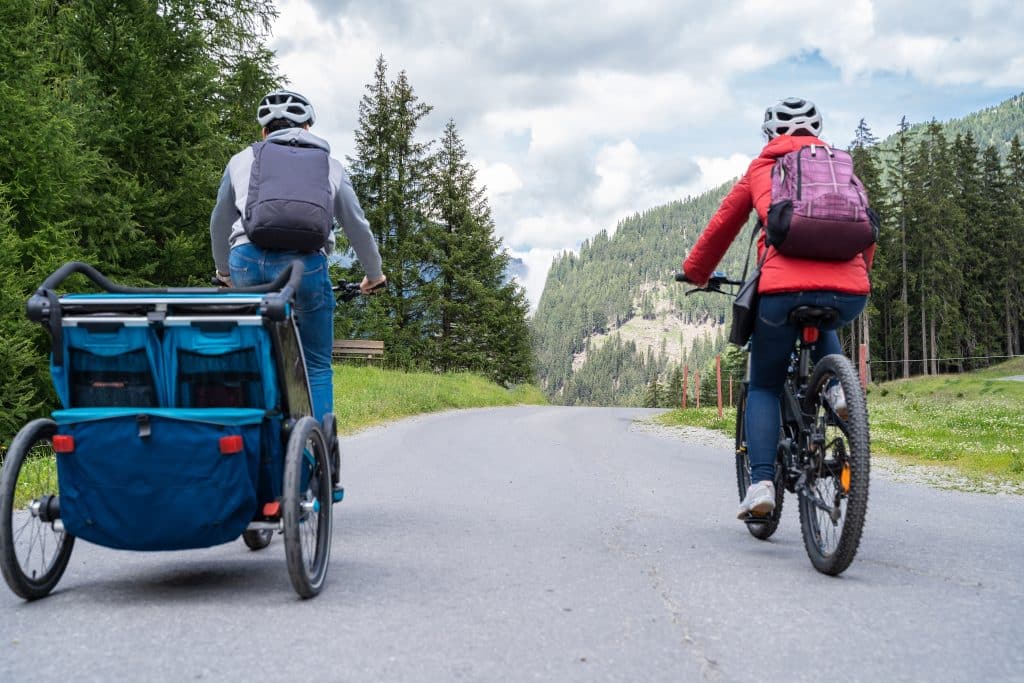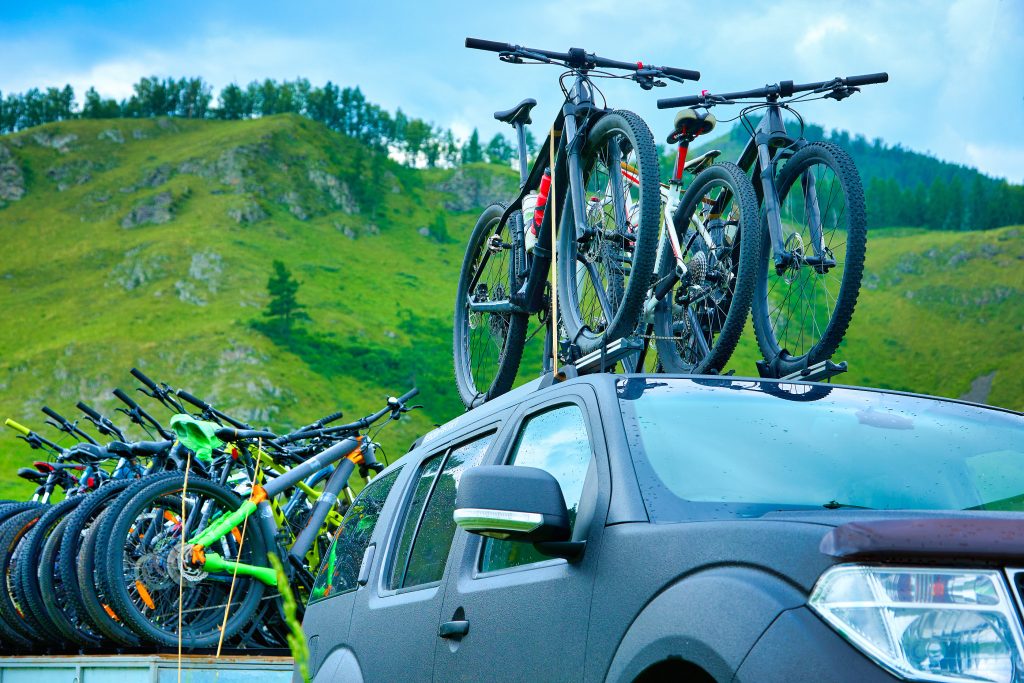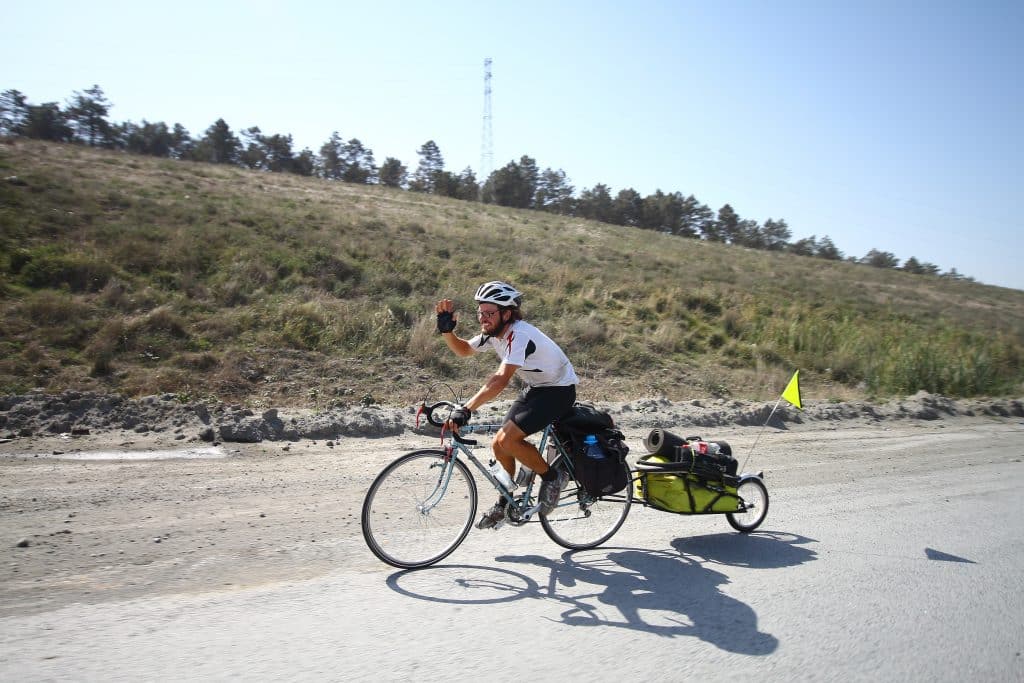A Complete Buyer’s Guide for Bike Trailers
Are you in the market for a bike trailer? Whether you’re a parent looking to transport your child, a pet owner seeking to take your furry friend on adventures, or an outdoor enthusiast needing to carry gear, a bike trailer can be a valuable addition to your cycling experience. In this comprehensive buyer’s guide, we’ll cover all the essential factors to consider when choosing the perfect bike trailer to meet your needs.
Whether you’re looking to enjoy family bike rides, explore the outdoors with your pet, or conveniently transport cargo, a bike trailer can be a game-changer. This guide will equip you with the knowledge needed to make an informed decision and find the ideal bike trailer that suits your lifestyle and cycling adventures. Get ready to hit the road and experience the convenience and versatility of a bike trailer.
Introduction to Bike Trailers
Bike trailers are versatile devices that attach to the back of a bicycle, transforming your two-wheeler into a multi-functional vehicle. Whether you’re a parent looking to share the joy of cycling with your child, a pet lover wanting to take your furry companion on outdoor adventures, or an enthusiast needing a convenient way to transport gear, a bike trailer can be an invaluable addition to your cycling experience.
What is a Bike Trailer?
A bike trailer is a wheeled, non-motorized, and typically enclosed structure designed to be towed behind a bicycle. These trailers come in various designs, including transporting passengers (such as children or pets) and carrying cargo or goods.
Types of Bike Trailers
Bike trailers can be categorized into several main types:
- Child Bike Trailers: These trailers are designed to safely carry children, providing a secure and comfortable environment for kids to enjoy a ride while they pedal. Child bike trailers often have safety harnesses, protective covers, and ample seating space.
- Pet Bike Trailers: Pet trailers allow pet owners to take their dogs, cats, or other small animals on bike rides. They have mesh panels for ventilation, leash attachments, and comfortable interiors to ensure pets enjoy the journey.
- Cargo Bike Trailers: Cargo trailers are versatile carriers for transporting groceries, luggage, camping gear, or any other load you need to move by bike. They come in various sizes and designs, some featuring flatbeds and others with enclosed compartments.
- Multi-Use Bike Trailers: Some bike trailers are designed for multi-purpose use, allowing you to convert them from cargo carriers to child carriers or vice versa. These trailers offer flexibility for different cycling needs.
Benefits of Using a Bike Trailer
Using a bike trailer offers numerous benefits:
- Eco-Friendly Transportation: Bike trailers are a sustainable mode of transportation, helping reduce the carbon footprint associated with short trips and errands.
- Family Bonding: Child bike trailers create opportunities for quality family time, allowing children to enjoy the outdoors and experience the thrill of cycling from a young age.
- Pet Adventures: Pet bike trailers enable pet owners to share outdoor experiences with their animals, whether for exercise, fresh air, or simple companionship.
- Cargo Convenience: Cargo trailers provide a convenient way to transport groceries, gear, or equipment without relying on a car, making errands and commuting more sustainable.
- Health and Fitness: Cycling with a bike trailer can enhance physical fitness and promote an active lifestyle.
- Exploration: Bike trailers open up opportunities for outdoor adventures, from picnics and day trips to camping and exploration of scenic routes.
This guide will delve into the various types of bike trailers, key features to consider when choosing one, attachment methods, and safety considerations. Whether you’re a seasoned cyclist or new to the world of bike trailers, the information provided will help you make an informed choice and elevate your cycling experiences. Get ready to embark on a new level of adventure with your bike trailer as your trusty companion.
Choosing the Right Type of Bike Trailer
Selecting the right type of bike trailer is essential, as it determines the purpose and functionality of your trailer. Your choice will depend on whether you intend to transport children, pets, or cargo or if you want a multi-use trailer that can adapt to various needs. Let’s explore the different types of bike trailers and what to consider when choosing the one that best suits your requirements.
1. Child Bike Trailers:
- Purpose: Child bike trailers are specifically designed to transport young passengers, typically children between 1 and 6.
- Features: They have a comfortable and secure seating area, safety harnesses, protective covers, and features for child entertainment, like windows and mesh panels.
- Considerations: Ensure your chosen trailer has sufficient seating capacity, safety features, and a smooth ride for your child’s comfort.
2. Pet Bike Trailers:
- Purpose: Pet trailers allow pet owners to bring their dogs, cats, or small animals on bike rides.
- Features: These trailers typically feature mesh panels for ventilation, leash attachments, and padded interiors to keep pets comfortable and secure.
- Considerations: Ensure the trailer provides adequate space for your pet to sit or lie down, and check for features like leash clips and zippered entry/exit points.
3. Cargo Bike Trailers:
- Purpose: Cargo trailers are designed for transporting goods, groceries, luggage, camping gear, or any other load you need to carry by bike.
- Features: They come in various sizes, with options for flatbed trailers or enclosed compartments. Some may include covers or waterproof features for weather protection.
- Considerations: Choose a cargo trailer that matches your load capacity needs and offers the protection required for your cargo.
4. Multi-Use Bike Trailers:
- Purpose: Multi-use trailers are versatile, as they can be adapted for different purposes. They’re excellent for individuals or families with varied needs.
- Features: These trailers are often designed to switch between child-carrying and cargo-carrying modes easily.
- Considerations: A multi-use trailer can provide flexibility and value for your investment if you have diverse requirements.
5. Electric Bike Trailers:
- Purpose: Electric bike trailers are designed to work with e-bikes, providing an extra power boost when towing heavier loads, such as children or cargo.
- Features: They may include an electric motor and battery system to assist with pedaling, especially on inclines.
- Considerations: If you have an electric bike and plan to carry substantial loads, an electric bike trailer can make your journeys easier.
When selecting a bike trailer, consider its intended purpose, weight capacity, suspension, compatibility with your bike, and safety features. Additionally, ensure the trailer is easy to attach and detach, as this will affect your overall cycling experience. By choosing the right type of bike trailer, you can enhance your cycling adventures, whether you’re embarking on family rides, pet outings, or cargo transportation.
Key Features to Consider When Choosing a Bike Trailer
Choosing the perfect bike trailer involves examining key features that can significantly impact your experience. Depending on your intended use, whether for carrying children, pets, cargo, or versatile purposes, these features can make a substantial difference in safety, comfort, and convenience. Here are the key features to consider when selecting a bike trailer:
1. Weight Capacity:
- Child Trailers: Ensure the trailer can safely accommodate the weight of your child or children.
- Pet Trailers: Choose a trailer with a weight limit suitable for your pet(s) to sit or lie comfortably.
- Cargo Trailers: Select a trailer that can handle the weight of your intended cargo or gear.
2. Trailer Size and Dimensions:
- Consider the interior space and dimensions of the trailer to ensure it offers enough room for your child, pet, or cargo. A comfortable fit is crucial.
3. Suspension and Wheel Type:
- Look for trailers with suspension systems to provide a smoother ride, especially when carrying children. Air-filled tires can further improve shock absorption.
4. Trailer Frame and Materials:
- Opt for trailers with durable and lightweight frames. Aluminum frames are common due to their strength and reduced weight.
5. Safety Features:
- Child Trailers: Check for secure harness systems, padded seats, roll cages, and reflective materials for visibility.
- Pet Trailers: Ensure there are leash clips, mesh panels for ventilation, and safety features like reflectors.
- Cargo Trailers: Consider covers and tie-down points to secure your cargo. Reflectors or flags enhance visibility.
6. Folding and Storage:
- For convenience, choose a trailer that is easily folded and stored when not in use. This feature is particularly useful for smaller living spaces.
7. Ventilation and Climate Control:
- Child and pet trailers should have good ventilation to keep passengers comfortable, especially in warm weather. Look for options with sunshades or rain covers for additional protection.
8. Attachment System:
- Ensure the trailer’s hitch system is compatible with your bicycle. Trailers may use different attachment mechanisms, such as quick-release levers or fixed mounts.
9. Safety Flags and Reflectors:
- These are essential for visibility, especially when riding in low-light conditions. Some trailers come with safety flags or have built-in reflectors.
10. Conversion Options (Multi-Use Trailers):
- If you’re considering a multi-use trailer, check how easily it converts from a child carrier to a cargo carrier and whether it offers any other versatile options.
11. Brand and Model-Specific Features:
- Different manufacturers may offer unique features, so explore specific brands’ and models’ specifications and benefits.
12. Price and Value:
- Consider your budget and evaluate the value you’ll receive in terms of features, durability, and performance.
Selecting a bike trailer that meets your specific needs and preferences is essential. Whether you’re embarking on family adventures, pet outings, or cargo transportation, taking these key features into account will help you make an informed decision and ensure an enjoyable and safe experience.
Compatibility and Attachment: Ensuring a Secure Connection
Choosing the right bike trailer is not just about the trailer itself; it’s also crucial to ensure it’s compatible with your bicycle. The attachment system plays a significant role in the safety and stability of the trailer while you’re on the road. Let’s delve into the key aspects of compatibility and attachment for bike trailers.
1. Bike Compatibility:
- Not all bike trailers are universally compatible with all bicycles. The first step is to ensure that your bike can accommodate a trailer. Most adult bikes can, but verifying the compatibility with your specific model is essential.
- For child trailers, you’ll usually attach the trailer to the rear axle of your bike. Ensure your bike has a sturdy rear axle that supports the trailer’s weight.
- Some electric bikes (e-bikes) may require specific trailer hitches, so check for compatibility with your e-bike.
2. Hitch Systems:
- The hitch system is the mechanism that connects the trailer to your bike. There are different types of hitch systems:
- Quick-Release Hitch: These are easy to use and allow quick attachment and detachment. They are common for child and cargo trailers. Ensure that the quick-release system is secure to prevent accidental detachment.
- Fixed-Mount Hitch: Fixed mounts provide a more permanent attachment. They are typically used for cargo trailers and are a sturdy choice.
- Flex Connector Hitch: This type of hitch provides more movement and turning flexibility. It’s beneficial for rough terrain and off-road biking.
3. Safety and Stability:
- The attachment system should be secure and stable to prevent wobbling or tipping while riding. Test the trailer’s connection before each ride to ensure it’s correctly attached.
4. Attachment Points:
- Confirm the trailer has sufficient attachment points on your bike to secure it safely. Child trailers often attach to the rear axle and the bike frame, while cargo trailers may have additional attachment points for securing the load.
5. Alignment and Tracking:
- Proper alignment is crucial for safety. The trailer should track in line with your bike, ensuring it doesn’t sway or veer off course.
6. Safety Mechanisms:
- Some trailers have built-in safety features, such as secondary attachment mechanisms or backup ropes, to prevent detachment if the primary hitch system fails.
7. Regular Inspections:
- To ensure ongoing safety, inspect the attachment system and connection points regularly. This is especially important if you frequently switch the trailer between different bikes.
8. Weight Distribution:
- Maintain a balanced load in the trailer to prevent the bike from becoming unstable. Proper weight distribution ensures safer and more controlled handling.
When choosing a bike trailer, consider the compatibility with your specific bike and the type of hitch system that suits your riding needs. Remember that a secure attachment is essential for a safe and enjoyable cycling experience. Always follow the manufacturer’s instructions for attachment and safety guidelines to ensure the trailer is properly connected to your bike.
Riding Experience and Maneuverability with Bike Trailers
The riding experience with a bike trailer can vary significantly depending on its design and features. How a trailer handles, maneuvers, and affects your overall cycling experience is essential for safety and enjoyment. Let’s explore key factors related to the riding experience with bike trailers and how to ensure smooth and safe rides.
1. Handling and Stability:
- The handling of your bike can change when a trailer is attached. Child trailers, pet trailers, and cargo trailers each have different effects on handling.
- Child trailers can improve stability, making the bike more balanced, while cargo trailers may slightly decrease stability due to additional weight.
2. Turning and Cornering:
- Turning with a bike trailer can be different from turning without one. Be aware of the trailer’s width and how it tracks behind your bike. Give yourself extra space for turns.
- Some trailers have features allowing tighter turning radius, making maneuvering in confined spaces easier.
3. Impact on Cycling Speed:
- Carrying a bike trailer, especially with children or cargo, can affect your cycling speed. You may need to pedal more and maintain a steady pace, which can be an excellent workout.
4. Suspension and Shock Absorption:
- A trailer with suspension can provide a smoother ride for passengers or cargo, especially on rough terrains or bumpy roads. This feature is particularly important for child trailers to ensure comfort.
5. Aerodynamics:
- A bike trailer creates additional wind resistance, impacting your speed and energy expenditure. Be prepared for a slightly slower ride, especially in windy conditions.
6. Braking and Stopping:
- Consider the increased weight when braking. Ensure your bike’s brakes are in good condition and can handle the additional load.
7. Safety and Visibility:
- Bike trailers, particularly child and pet trailers, can make your bicycle more visible with their vibrant colors and reflective materials.
- Ensure the trailer has its reflectors and flags for visibility, especially in low-light conditions.
8. Terrain Considerations:
- Different types of trailers may handle terrains differently. Cargo trailers with larger wheels may perform better on rough terrain, while child trailers often work well on smooth surfaces.
9. Training Wheels for Children:
- Some child trailers come with a “third wheel” or training wheel to prevent tipping when the bike is stationary. This can be a helpful safety feature for child trailers.
10. Balancing the Load:
- Properly balance the load inside the trailer to avoid sudden shifts affecting stability. Secure items and ensure they are distributed evenly.
To enhance your riding experience with a bike trailer, practice riding with it in a safe environment to get accustomed to the handling and maneuverability. Pay close attention to turning, braking, and maintaining a steady pace. Moreover, always follow the manufacturer’s guidelines for loading and securing passengers or cargo to maintain stability and safety while riding.
Comfort and Safety for Passengers in Bike Trailers
Ensuring the comfort and safety of passengers in bike trailers is paramount, whether you’re carrying children or pets. A comfortable and secure environment can distinguish between enjoyable and stressful rides. Here are essential considerations for providing a safe and comfortable experience for your trailer’s passengers:
1. Harness Systems:
- Child Trailers: Child bike trailers should have secure harness systems to keep your child safely seated. Look for models with 5-point harnesses that fasten over the shoulders and around the waist.
2. Padded Seats and Interior:
- Check if the trailer offers padded seats or cushioning to enhance comfort for passengers. This is particularly important for child trailers to prevent discomfort during longer rides.
3. Ventilation:
- Ensure the trailer has proper ventilation to keep passengers comfortable. Mesh windows or panels can provide airflow and prevent the interior from becoming too warm or stuffy.
4. Weather Protection:
- Child and pet trailers often have protective covers that shield passengers from rain and sun. Cargo trailers may also have weather-resistant features to protect your belongings.
5. Suspension System:
- Consider trailers with suspension systems that absorb shocks and impacts for a smoother ride, especially on bumpy roads or off-road trails.
6. Seating Capacity:
- Make sure the trailer has enough seating capacity for your intended passengers. Check child trailers’ maximum weight and size limit to ensure a safe fit.
7. Leash Attachments (Pet Trailers):
- Pet bike trailers should have leash attachments to secure your pet inside, preventing them from jumping out during the ride.
8. Safety Flags and Reflectors:
- Ensure the trailer has safety flags and reflectors for visibility, especially when riding in low-light conditions.
9. Training Wheels (Child Trailers):
- Some child trailers have training wheels to prevent tipping when the bike is stationary. These can provide extra stability when getting on and off the bike.
10. Adjustability:
- Look for trailers with adjustable features, such as reclining seats, to accommodate the comfort needs of passengers.
11. Easy Entry and Exit:
- Ensure the trailer provides easy entry and exit for children, pets, or cargo passengers. A wide and accessible opening can make the experience more convenient.
12. Interior Safety:
- Regularly check the trailer’s interior for any sharp or protruding objects that could cause harm to passengers. Keep the interior clean and free of debris.
13. Frequent Inspections:
- Before each ride, inspect the trailer, including its harnesses, seating, and attachment systems, to ensure everything is secure and functioning correctly.
14. Communication:
- If you are carrying children, establish a method of communication, such as hand signals or simple verbal cues, to ensure you can communicate during the ride.
Prioritize safety and comfort when selecting a bike trailer and follow the manufacturer’s guidelines for securing passengers. Regularly maintain and inspect the trailer to ensure it remains a safe and enjoyable mode of transportation for your loved ones, whether they are children, pets, or cargo.
Storage and Transportation of Bike Trailers
Properly storing and transporting your bike trailer when it’s not in use is essential to keep it in good condition and ensure it’s ready for your next adventure. Here are key considerations for the storage and transportation of bike trailers:
1. Storage Location:
- Choose a dry and sheltered storage location, such as a garage or shed, to protect the trailer from the elements. If indoor storage is not possible, use a waterproof cover to shield it from rain and sunlight.
2. Cleaning:
- Before storing your trailer, could you give it a thorough cleaning? Remove any dirt, mud, or debris, and wipe it down with a damp cloth. Clean and dry the interior to prevent mold or mildew.
3. Folding (if applicable):
- Many bike trailers, especially cargo trailers, are designed to fold for compact storage. Follow the manufacturer’s instructions to fold and secure the trailer properly. This is particularly useful for trailers with limited storage space.
4. Tire Pressure:
- Check and maintain the tire pressure according to the manufacturer’s recommendations. Underinflated tires can lead to damage over time.
5. Security:
- Consider using a bike lock or a security cable to prevent trailer theft, especially if you’re storing it in an area accessible to others.
6. Attachment Systems:
- If your trailer has an attachment system that can be detached, store it separately, especially if it’s quick-release. This prevents the loss or damage of essential parts.
7. Safety Flags and Reflectors:
- Remove safety flags and reflectors if they are detachable, and store them with the trailer to prevent loss or damage.
8. Maintenance Schedule:
- Create a maintenance schedule to inspect the trailer at regular intervals. Check for wear and tear, loose bolts, and any needed repairs.
When it comes to transporting your bike trailer for trips or outings, follow these tips:
1. Proper Securing:
- Secure the trailer to your vehicle or bike rack using appropriate straps or attachments. Ensure it is fastened tightly to prevent it from shifting during transport.
2. Compatibility:
- Verify that your vehicle or bike rack is compatible with the type of trailer you have. Some bike racks are designed for specific trailer attachments.
3. Weight Capacity:
- Be mindful of the weight capacity of your vehicle’s bike rack. Do not exceed its limits, which can cause damage or safety hazards.
4. Safety Precautions:
- Ensure the trailer is safely stored during transportation, especially on highways or at high speeds. Use additional safety measures like bungee cords or cargo nets if needed.
5. Frequent Checks:
- Periodically check the trailer during transport stops to ensure it remains secure and in good condition.
6. Accessibility:
- Ensure that you can access your trailer easily when needed. If transporting it to a trailhead, ensure it’s simple to unload and attach to your bike.
By following these guidelines for storage and transportation, you can keep your bike trailer in top condition and ready for your next ride, whether it’s a family adventure, a pet outing, or cargo transport. Regular maintenance and proper storage will extend the lifespan of your trailer and provide safe and enjoyable experiences.
Maintenance and Durability of Bike Trailers
Maintaining your bike trailer is crucial to ensure its longevity and continued safe use. Regular maintenance helps prevent wear and tear, enhances safety, and keeps your trailer in top condition for years. Here’s a comprehensive guide on maintenance and durability for bike trailers:
1. Cleaning:
- After each use, clean your trailer to remove dirt, dust, and debris. Use a damp cloth or a soft brush to clean the exterior. For child trailers, clean the interior to prevent mold or mildew growth. Allow the trailer to dry completely before storage.
2. Inspection:
- Regularly inspect your trailer for any signs of damage, including worn tires, loose bolts, fraying fabric, or broken parts. Pay attention to the frame, harnesses (for child trailers), wheels, and attachment systems.
3. Tire Maintenance:
- Keep the trailer’s tires properly inflated according to the manufacturer’s recommendations. Underinflated tires can lead to premature wear and decreased stability. Ensure the tires are in good condition and free from cuts or punctures.
4. Lubrication:
- Lubricate moving parts like wheel axles and hitch components to reduce friction and prevent rust. Use a bike-specific lubricant to avoid attracting dirt and grime.
5. Wheel Maintenance:
- Check the wheels for loose spokes, damaged rims, or wobbles. Ensure that they are securely attached to the axle.
6. Attachment System:
- Inspect the attachment system for wear and tear. Ensure that hitch components are secure and functioning correctly. Lubricate as needed.
7. Harness and Safety Systems (for Child Trailers):
- Verify that child trailers’ harnesses, buckles, and safety features are in excellent condition. They should be clean and free of defects.
8. Frame and Fabric:
- Examine the frame for any signs of bending, cracks, or damage. Check the trailer’s fabric for tears, holes, or signs of wear. Repair or replace the damaged fabric as necessary.
9. Suspension System:
- If your trailer has a suspension system, ensure it’s well-maintained and functioning correctly, especially if you frequently ride on rough terrains.
10. Storage and Transportation:
- Follow the guidelines for proper storage and secure transportation, as outlined in the previous section. This helps prevent unnecessary wear and tear.
11. Weather Protection:
- Inspect your trailer for cracks or tears if it includes a cover or rain shield. Ensure it provides adequate weather protection.
12. Manufacturer’s Instructions:
- Always follow the manufacturer’s maintenance instructions and recommendations, which may vary depending on the trailer’s make and model.
13. Repairs:
- Promptly address any needed repairs. If you are uncomfortable making repairs, seek professional assistance to ensure the trailer’s safety and functionality.
Regular maintenance ensures the durability of your bike trailer and enhances safety for passengers or cargo. You can prevent accidents and costly repairs by addressing issues early and performing routine inspections.
Remember that maintenance needs vary based on your trailer’s type, brand, and usage. Refer to the manufacturer’s guidelines for specific maintenance recommendations tailored to your trailer’s model.
Budget Considerations for Bike Trailers
Budget considerations play a significant role in your decision-making process when purchasing a bike trailer, whether for carrying children, pets, or cargo. Balancing your financial constraints with your specific needs and expectations is important. Here’s a guide to help you make budget-conscious decisions when buying a bike trailer:
1. Set a Realistic Budget:
- Determine a clear budget range that you are comfortable with. Consider how often you’ll use the trailer and the features that are most important to you.
2. Identify Your Needs:
- Define the primary purpose of the bike trailer. Are you looking to transport children, pets, cargo, or a combination? Your needs will influence the type and features required.
3. Prioritize safety:
- Safety should be non-negotiable. Regardless of your budget, always choose a trailer that meets or exceeds safety standards for your intended use, especially when carrying children.
4. Consider Trailer Type:
- Different trailer types come at different price points. Cargo trailers are more budget-friendly than dedicated child or pet trailers. Consider which type best suits your budget and needs.
5. Research Brands and Models:
- Research various brands and models within your budget range. Read reviews, seek recommendations, and compare features to find the best value for your money.
6. Used vs. New:
- Consider whether a used trailer might be a cost-effective option. However, thoroughly inspect any used trailer for wear and safety before purchasing.
7. Additional Costs:
- Factor in potential additional costs, such as accessories (rain covers, sunshades, etc.) and maintenance expenses, when assessing the total cost of ownership.
8. Versatility:
- Some trailers offer versatility, allowing you to use them for different purposes. Investing in a multi-purpose trailer might be more cost-effective in the long run.
9. Long-Term Value:
- Consider the long-term value of the trailer. Paying slightly more for a durable, high-quality trailer may save you money in replacement costs over time.
10. Warranty and Customer Support:
- Evaluate the warranty and customer support offered by the manufacturer. A longer warranty can provide peace of mind, and responsive customer support can be invaluable.
11. Discounts and Sales:
- Keep an eye out for discounts, promotions, and sales, which can significantly reduce the cost of a trailer. Consider shopping during seasonal or holiday sales.
12. Build Your Trailer:
- If you have specific DIY skills, you can explore building a bike trailer from scratch or customizing a cargo trailer to suit your needs at a lower cost.
Remember that your budget is a key factor, but compromising on safety and essential features is not recommended. Prioritize the well-being of passengers or cargo and make budget adjustments accordingly. By carefully considering your needs and conducting thorough research, you can find a bike trailer that offers the best value for your budget while meeting your requirements.
Top Bike Trailer Brands
When it comes to bike trailers, choosing a reputable brand can make a significant difference in safety, durability, and overall quality. Here are some of the top bike trailer brands known for their excellent products:
- Burley Design: Burley is a well-established brand with a strong reputation for producing high-quality child, pet, and cargo bike trailers. They are known for their safety features and user-friendly designs.
- Thule Chariot: Thule is a respected brand in the outdoor and adventure gear industry. Their Chariot bike trailers are renowned for their versatility, durability, and adaptability to various activities.
- Croozer: Croozer is a German brand that produces a range of bike trailers for children and cargo. They are known for their robust designs and innovative features.
- Schwinn: Schwinn is a classic American brand with a long history of producing bikes and accessories. They offer affordable and reliable bike trailers for families.
- Hamax: Hamax is a Norwegian brand specializing in child bike trailers. They are recognized for their safety standards and comfortable designs for children.
- BOB Gear: BOB Gear, a subsidiary of Britax, is known for its rugged and off-road-ready bike trailers. They are ideal for outdoor enthusiasts who want to take their children or cargo on adventures.
- Allen Sports: Allen Sports offers budget-friendly bike trailers and trailers that can be easily converted for different purposes. They are known for their affordability and user-friendly features.
- InStep: InStep, a brand under Pacific Cycle, produces a variety of affordable bike trailers, including models for children and pets.
- Weehoo: Weehoo specializes in child bike trailers with a unique pedal mechanism that allows older kids to contribute to the ride. They focus on providing an interactive experience for children.
- Aosom: Aosom offers a range of budget-friendly bike trailers for cargo and pets. They are known for their affordability and simplicity.
- Wike: Wike is a Canadian brand emphasizing eco-friendly and durable bike trailers for children and cargo. They focus on sustainability and quality.
- Clevr: Clevr is known for its cargo bike trailers, including folding designs for easy storage and transportation.
Choosing a bike trailer brand should align with your specific needs and budget. While these brands are recognized for their quality and safety, it’s essential to consider the type of trailer and features that best suit your intended use. Additionally, always refer to user reviews and expert recommendations to make an informed decision.
FAQs (Frequently Asked Questions) about Bike Trailers
Here are some common questions and answers related to bike trailers:
1. What are the different types of bike trailers?
- Bike trailers come in various types, including child trailers for carrying kids, pet trailers for transporting pets, and cargo trailers for hauling groceries or gear. There are also specialized trailers for specific activities like jogging or strolling.
2. How do I choose the right size for a bike trailer?
- The size of a bike trailer depends on its intended use. Measure the interior dimensions to ensure it can accommodate your child, pet, or cargo comfortably. Consider the age and size of the passenger or items you plan to carry.
3. Are bike trailers safe for carrying children?
- Yes, bike trailers for children are typically safe and meet specific safety standards. Look for trailers with a five-point harness, sturdy frame, and safety features like reflectors and a flag for visibility.
4. Can I use a bike trailer with an electric bike (e-bike)?
- Many bike trailers are compatible with e-bikes, but it’s essential to check the manufacturer’s compatibility and weight limit recommendations. Some e-bikes may have unique requirements.
5. How do I attach a bike trailer to my bicycle?
- Attachment methods vary by trailer type and brand. Most child and pet trailers attach to the bike’s rear axle, while cargo trailers often connect to the seat post or a rear rack. Always follow the manufacturer’s instructions for proper attachment.
6. What are some safety tips when using a bike trailer?
- Ensure the trailer is securely attached to the bike, and check tire pressure regularly. Use safety flags and reflectors for visibility. Helmets are essential for children. Follow traffic rules and avoid high-traffic areas.
7. Can I convert a bike trailer for multiple uses?
- Some trailers are versatile and can be converted for different purposes. For instance, some cargo trailers offer conversion kits to transform them into joggers or strollers. Check with the manufacturer for compatibility.
8. How do I maintain and clean a bike trailer?
- Regularly clean the trailer after use with a damp cloth or soft brush. Lubricate moving parts and check for wear and tear. For child trailers, clean the interior and harnesses. Refer to the manufacturer’s maintenance instructions.
9. Can I use a bike trailer off-road or on rough terrain?
- Some bike trailers are designed for off-road use and rough terrains. Check the trailer’s specifications to ensure it can handle the terrain you plan to ride on. Off-road trailers often have suspension systems for added comfort.
10. Are there weight limits for bike trailers?
- Yes, bike trailers have weight limits, which vary depending on the type and brand of the trailer. Exceeding the weight limit can affect safety and performance, so adhering to these guidelines is crucial.
11. Do bike trailers have brakes?
- Most bike trailers do not have brakes, but they are designed to have low rolling resistance to avoid straining the cyclist. Some trailers have parking brakes to keep them in place when detached from the bike.
12. How do I fold and store a bike trailer?
- If your bike trailer is designed to fold, follow the manufacturer’s instructions for proper folding and storage. Choose a dry and sheltered location to protect it from the elements.
Remember that specific questions about your bike trailer should be addressed in the manufacturer’s manual and guidelines. Always prioritize safety and follow the instructions provided with your trailer for the best user experience.
Conclusion: Your Perfect Bike Trailer Awaits
In conclusion, whether you’re a parent looking to enjoy family rides, an avid cyclist needing a cargo solution, or a pet owner wanting to include your furry friend in your biking adventures, there’s a perfect bike trailer. This comprehensive guide has covered the essentials, from understanding the various types of bike trailers to choosing the right size, considering key features, and even addressing budget constraints.
Remember that safety should always be the top priority when selecting a bike trailer. Look for well-constructed trailers with safety features, including harnesses and visibility enhancements, especially when carrying children or pets.
Consider your unique needs and usage scenarios. Versatile trailers can adapt to multiple functions, making them a cost-effective choice in the long run. Take the time to research different brands and models, read user reviews, and seek expert recommendations to ensure you make an informed decision.
Whether planning leisurely rides with your children, embarking on cycling adventures with your pets, or simplifying your cargo transport, a well-chosen bike trailer can enhance your cycling experience and open up new possibilities for outdoor fun. Your perfect bike trailer awaits, ready to accompany you on your biking journeys.







